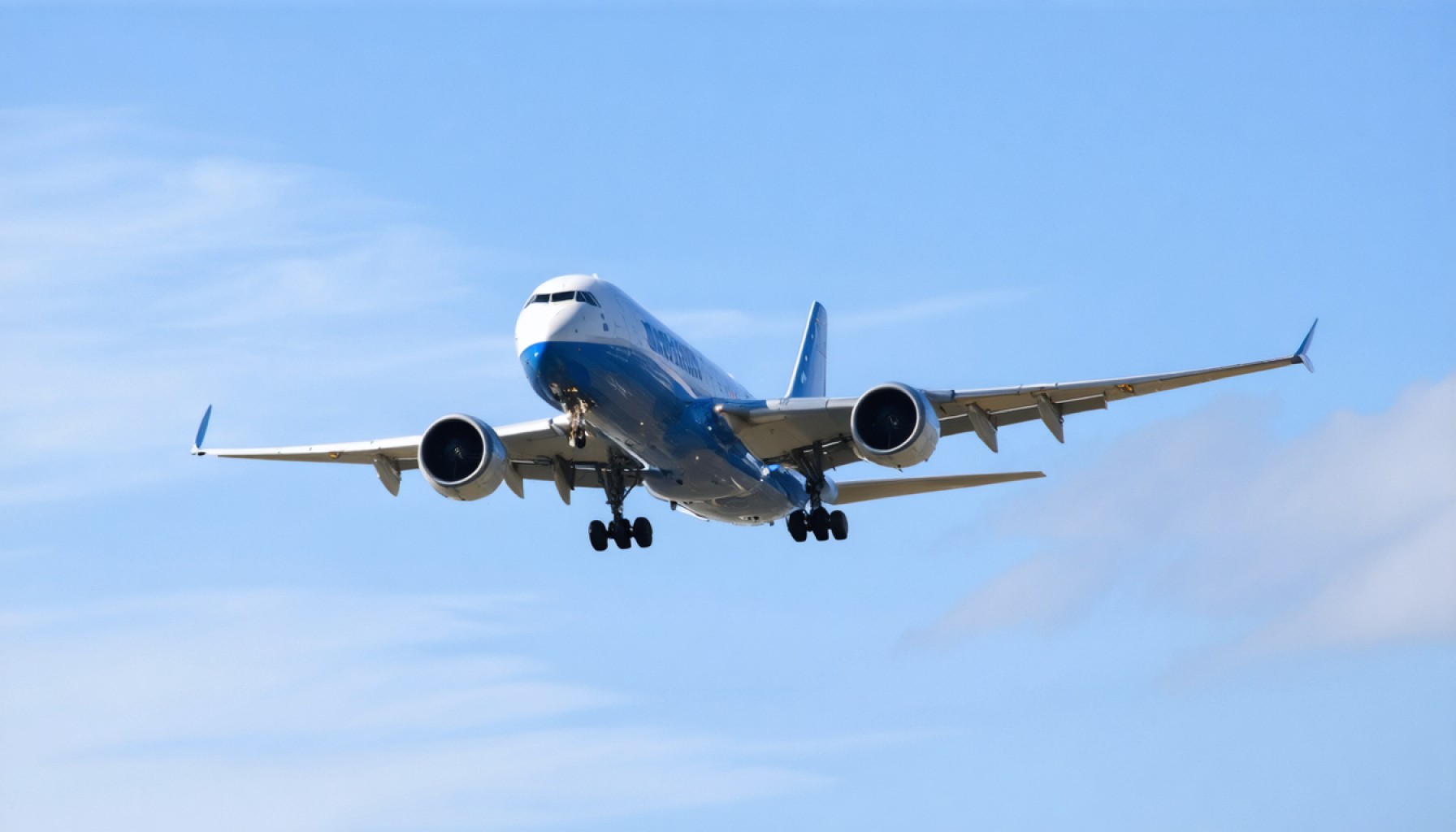
- Boeing is experiencing potential delays with key projects, including the new Air Force One and 777X airliners.
- The next Air Force One may face delays until 2029, as communicated through government sources.
- Emirates expects the 777X delivery to be postponed until the second quarter of 2027 or later, potentially affecting Boeing’s finances.
- The company faces heightened inventory costs and possible compensatory payments due to these delivery setbacks.
- Despite challenges, the 737 MAX project shows promise, with production supported by Safran and GE Aerospace’s engine output plans.
- Boeing’s ability to navigate these challenges and leverage opportunities will be crucial for its future success in the aerospace industry.
The vast skies pose a tumultuous challenge for Boeing as whispers of delays and strategic pivots reverberate across the aerospace industry. While official confirmation hovers just out of reach, credible sources paint a picture of a company navigating a path fraught with both turbulence and opportunity.
Imagine the majestic Air Force One soaring through the clouds—a symbol of unity and power. Yet, its next iteration faces potential delays extending to 2029. These unspoken setbacks have emerged from the White House corridors, suggesting that Boeing’s initial timelines could slip further. Amidst this uncertainty, the spotlight turns to the aerospace titan’s multifaceted ability to manage simultaneous projects, hoping to balance both public expectations and intricate engineering challenges.
On another front, the 777X, destined to build on the legacy of the 777, faces its own tempest. Emirates, a key patron with a colossal investment in the widebody jets, now forecasts delivery delays to the distant second quarter of 2027, or even later. This uncertainty could ripple across Boeing’s finances, triggering compensatory payments and heightening inventory costs—a bitter pill to swallow for a company striving to solidify its standing in the widebody market.
Yet, in the midst of these storms, a brighter horizon appears with Boeing’s 737 MAX. Safran, in tandem with GE Aerospace, expresses optimism in meeting expanded engine production targets. This synergy might just allow Boeing to achieve its ambitious goals of ramping up production rates, promising a substantial uplift in its commercial aircraft outlook.
In this mosaic of mixed fortunes, one truth stands clear: Boeing’s ability to adapt and evolve will define its journey. Investors and aviation aficionados alike brace for a closely watched dance between adversity and triumph, as Boeing aims to reclaim its skyward ascent.
Boeing’s Journey: Navigating the Aerospace Storms Towards a Skyward Ascent
How Boeing Faces Delays and Strategic Pivots in the Aerospace Industry
Boeing is no stranger to the challenges that come with manufacturing and delivering cutting-edge aircraft. The company’s recent struggles with delays in high-profile projects such as the future Air Force One and the 777X underscore the complexities involved in aerospace innovations. This article explores these challenges, industry trends, and what the future holds for Boeing and its stakeholders.
Real-World Use Cases and Industry Trends
1. Air Force One Delays: Military Significance and Prestige
The new generation of Air Force One aircraft is much more than a VIP transport; it symbolizes national pride and authority. Any delays could impact military schedules and ceremonial roles tied to the presidency.
2. 777X Delays and Implications
The 777X is a cornerstone in Boeing’s widebody strategy. Delays could impact airlines that are banking on its efficiency and long range to expand their routes. Potential financial implications range from penalty fees to alternative sourcing by airlines.
3. 737 MAX Production Hope
Improvements in 737 MAX production could provide Boeing with steady cash flow and market share advantages, especially as air travel recovers globally.
Features, Specs, & Pricing
– 777X: Equipped with innovative technologies such as new GE9X engines, composite wings with folding wingtips, and updated passenger cabins. Pricing for these jets generally starts upwards of $400 million, depending on configurations and customization options.
– 737 MAX: Known for fuel efficiency and lower operational costs, making it attractive for budget airlines. Typical cost may range from $100 to $135 million.
Market Forecasts & Insights
The aerospace market is projected to gradually recover from pandemic lows, driven by increased demand for cargo and passenger travel. The current backlog suggests Boeing’s production rates and deliveries will significantly ramp up once delays are resolved. However, the competitive landscape—particularly vis-à-vis Airbus—remains intense. Companies like Safran and GE Aerospace are pivotal in Boeing’s plans, particularly through accelerating engine production.
Critical Reviews & Comparisons
– Comparison with Airbus: Boeing’s delays could be contrasted with Airbus, which has capitalized on Boeing’s struggles by advancing its own market penetration. Airbus’s A350 and A321neo have been significant competitors.
– Customer Sentiment: Airlines awaiting deliveries are expressing frustration, as delays can disrupt route planning and fleet management.
Controversies & Limitations
– Delay Impact: Contractual and reputational impacts of delays are significant. Airlines may seek compensation for delivery failures, creating financial pressure.
– Technical Hurdles: Engineering challenges remain a substantial risk area, with complex new systems integration and regulatory hurdles.
Security and Sustainability
Boeing has been actively working towards achieving sustainable aviation, focusing on fuel-efficient engines and exploring sustainable aviation fuels (SAFs). However, balancing cost-effectiveness and environmental sustainability remains a challenge.
Pros & Cons Overview
Pros:
– Strong production pipeline once operational hurdles are overcome.
– Robust partnerships with suppliers like Safran and GE.
Cons:
– Delays impacting financials and brand image.
– Stiff competition from Airbus and other market entrants.
Actionable Recommendations and Quick Tips
– For Investors: Track quarterly updates from Boeing and its suppliers. Engage in discussions about compensations if you are associated with delayed orders.
– For Aviation Enthusiasts: Monitor industry reports for insights into technological advancements and regulatory approvals that may affect timelines.
– For Airline Fleet Managers: Consider contingency planning by looking at alternative new or used aircraft to fulfill immediate needs due to potential delays.
To know more about Boeing’s latest developments, visit Boeing.



